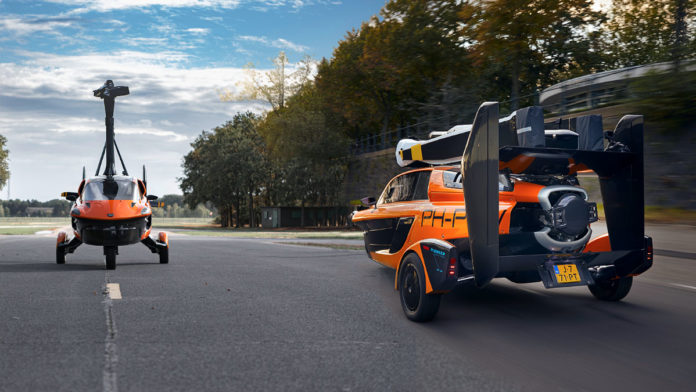Last October, the PAL-V’s Liberty flying car became the first flying car to get road permission for Europe after eight months of testing. The Liberty is now also the first to complete the full certification basis with EASA (European Union Aviation Safety Agency).
The European safety authorities finalized the requirements for the PAL-V Liberty after more than ten years of testing by the Netherlands-based company. The issuance of the certification basis shows the confidence of the European authorities and the maturity of the design and the company.
“Getting a flying car to the market is hard. It takes at least ten years”, said Robert Dingemanse, PAL-V’s CEO: “Although we are experienced entrepreneurs, we learned that in aviation, everything is exponentially stricter. Next to the aircraft, all aspects of the organization, including suppliers and maintenance parties, must be certified.”
The PAL-V Liberty is a two-seat gyroplane with a top speed of 180 km/h (112 mph) in flight mode, a maximum take-off weight of 910 kg, an air range of 500 km (311 miles), and a flight time of 4.3 hours. In-flight mode, the engine power rises to 200 hp, and the car can reach the maximum altitude of 3500 meters.
On the ground, the PAL-V Liberty is transformed into a three-wheeled car. The car is equipped with a gasoline engine that develops 100 hp and provides a top speed of 160 km/h (100 mph) on the road with a range of 1315 km (817 miles).
PAL-V agreed with EASA to use the Certification Specifications for Small Rotorcraft, CS-27, as a starting point for the development and Certification Basis in 2009. Since then, the PAL-V engineers worked together with EASA to amend the complete list of over 1,500 criteria to make it applicable for the PAL-V. It is also the reason why the manufacturer of flying cars sees the certification as an important next step in ultimately bringing the PAL-V Liberty to the market with its dual functionality as a road vehicle as well as an aircraft.
“Safety is key in developing the Liberty; we are privileged to work with top experts of EASA,” said CTO Mike Stekelenburg. “Their high safety standards also allow the Liberty to be used professionally. From the start, we built the Liberty to comply with existing regulations. This strategy provides the fastest route to market.”
The company has already started compliance demonstration to obtain the type certificate, which will be followed by delivery of vehicles to customers. The EASA type certificate is valid for Europe and is also accepted in 80% of the world market, including the US and China.
